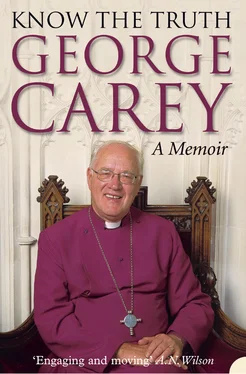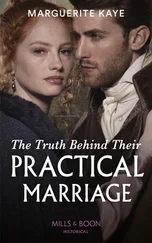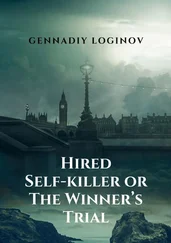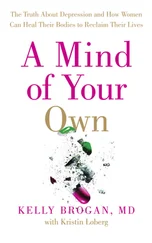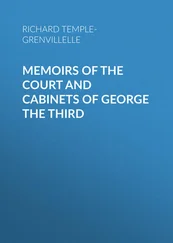Largely as a result of my desire to make St Nic’s more central to the life of the community, we set about a radical reordering of the building. From my first visit to the church I realised it had huge problems, but equal potential. It was ideally and excitingly positioned in a busy market square, yet it was in a very rundown state. The interior was gloomy and unattractive. The pews, many in very bad condition, made it difficult to adapt the space for anything other than worship. Heating was supplied by a temperamental coal boiler which, I was told, was the last solid-fuel boiler in the diocese, and which required stoking from Friday onwards before the Sunday services could be comfortably held. There were also serious leaks in the roof – six or so buckets were placed by the church cleaner, Mrs Simpson, at the offending places. If one adds to the list of problems the fact that the church interior was defiantly puritan in its ugliness and tastelessness, something radical had to be done.
The creation of an attractive interior that provided facilities which could be used seven days a week became the mirror image of the spiritual pilgrimage of the congregation at the same time. I learned the lesson that no reordering of any building should happen without the spiritual reordering of people. That we were able to raise £350,000 within two years at a time when inflation was raging at around 20 per cent was only slightly short of miraculous. I remain convinced to this day that many congregations do not properly see that buildings may either be part of their successful outreach into the community or, in the majority of cases, significant reasons for the decline of church life.
It is said in the Old Testament that Jacob’s love for Rachel was so special that his seven years of service ‘seemed but a day’. My time at St Nic’s was sometimes tough and always exhausting, but it stands out as perhaps the most significant period of our joint ministry. Eileen was blissfully happy bringing up our four children and sharing energetically in our work together. All of the children started school in Durham, and our eldest, Rachel, went away to college in London, while our sons Mark and Andrew completed A’ levels and ‘O’ levels respectively. Our youngest, Lizzie, was in primary school by the time we left. We lived in a beautiful seven-bedroomed vicarage overlooking the cathedral and castle, with grand, high-ceilinged rooms for entertaining, and a garden filled with adventure for the children and bushes packed with summer fruits. The whole family were to remember Durham with great fondness; it was an idyllic place to grow up.
Eileen’s ministry developed to such an extent in the church family that she provided much of the hospitality offered by St Nic’s, and opened the vicarage for bed-and-breakfast in order to raise money for the building project. Eileen’s mother, Margaret Daisy Hood, now in her eighties, came to live with us, having spent the last ten years of her widowhood with Eileen’s sister in Canada. It was clear that Mrs Hood was suffering from dementia, and this became very distressing for us all. Sometimes she would wander from the house, to be found in a confused state in some part of the city and be brought back by a kindly and sympathetic neighbour. This certainly added to the stress on Eileen. Alas, both her mother and my father died within a short while of each other towards the end of our time at St Nic’s. Both were wonderful Christian people whose influence on us was great. I particularly felt the death of Dad as his passing was so sudden – he had a severe heart attack and died instantly. His funeral in Dagenham Parish Church took the form of deep thanks-giving for the rich life of a truly humble man whose legacy was considerable.
In my second year at St Nic’s an unexpected phone call from Christopher Hill, on the staff at Lambeth Palace, affected my life greatly. Christopher’s responsibility was for ecumenical relationships. I remember that November morning very well.
‘Would you like to spend three weeks in Rome?’ was the strange question.
Looking out of my office window on a very bleak and cold Durham, I replied, ‘Yes please. But tell me more.’
I was told that the following February the Anglican Centre in Rome would be hosting a three-week course for representatives of all Provinces of the Anglican Communion, organised by the Pontifical Council for Christian Unity. John Moorman, the former Bishop of Ripon and now retired to Durham, was to lead the course. I had been chosen to represent the Church of England.
It was a life-changing experience. Ever since my Oak Hill days I had been becoming closer and closer to Christians of other denominations, especially in the Roman Catholic Church. In Durham warm relationships with Father John Tweedy, the local Roman Catholic priest, were quickly established and we worked closely together. I was also a regular visitor to Ushaw Seminary, a few miles outside the city. The visit to Rome made me aware that this great Christian city was part of my heritage of faith, and Roman Catholicism entered my understanding of theology. The place overwhelmed me, and in my spare time from the lectures and sessions of the course I would walk for miles – retracing the journey of many a martyr from the Colosseum to the catacombs. In the crypt of St Peter’s I would linger and pray at the very place where the bones of St Peter were laid.
Bishop John Moorman, a renowned authority on St Francis, was a splendid leader. Other teachers shaped our thinking – including a youthful Terry Waite, who was then working for the Roman Catholic Mission Department, and Professor Gerry O’Collins, New Testament theologian at the Gregoriana who later became a dear friend. Among fellow Anglicans was Misaeri Kauma, Assistant Bishop of Namirembe in Uganda, an inspiring and dynamic missionary Bishop. The three weeks in Rome gave us all an opportunity to study Catholicism, not only through the lectures and reading but also through rare opportunities to meet representatives of the many ‘dicasteries’, or departments, that comprise the Vatican.
But this three-week study course was not an unembroidered charm offensive by the Roman Catholic Church. It was a deliberate attempt to open the Church to others. I was especially struck by our private audience with Pope Paul VI. A deeply holy man, he was frank about the problems of his Church following the Second Vatican Council. As he saw it, the Council, which concluded its work in 1965, and with which he clearly identified, had left the Church divided. Implementation of its vision had fallen to him but was proving difficult to achieve, although much had been done. Now, in the twilight of his life and ministry, he was showing signs of great weariness, yet a serene spirit in Christ came through strongly to us.
On the course we were invited to put our toughest questions to our Catholic friends. As the only evangelical present, my theological questions concerned the infallibility of the Pope, the Marian dogmas, the authority of the Church, and prayers to the saints. While I was by no means fully satisfied by the responses given, I was better informed when I returned home. Two years later I made a private visit to consolidate my knowledge and to study in greater depth the significance of the Virgin Mary.
In my sixth year at St Nic’s I began to receive letters, phone calls and personal messages asking me to consider putting my hat in the ring for the Principalship of Trinity College, Bristol. I rejected all these overtures for a number of reasons. The first, and most important, was that my work at St Nic’s was not over. I could not leave when there was still a large amount of money to raise and the building work had not yet begun. A second reason which appeared to make it unlikely that I would be offered the post was that Trinity College’s theological tradition seemed far removed from mine. It stood for a reformed evangelical doctrinal commitment which seemed to me narrow, negative, anti-Rome, and puritanical. Perhaps this perception of Trinity was ill-founded, but it was shared by many other people in the Church at that time. Strong appeals to consider the post, however, made Eileen and me waver. What should we do?
Читать дальше
